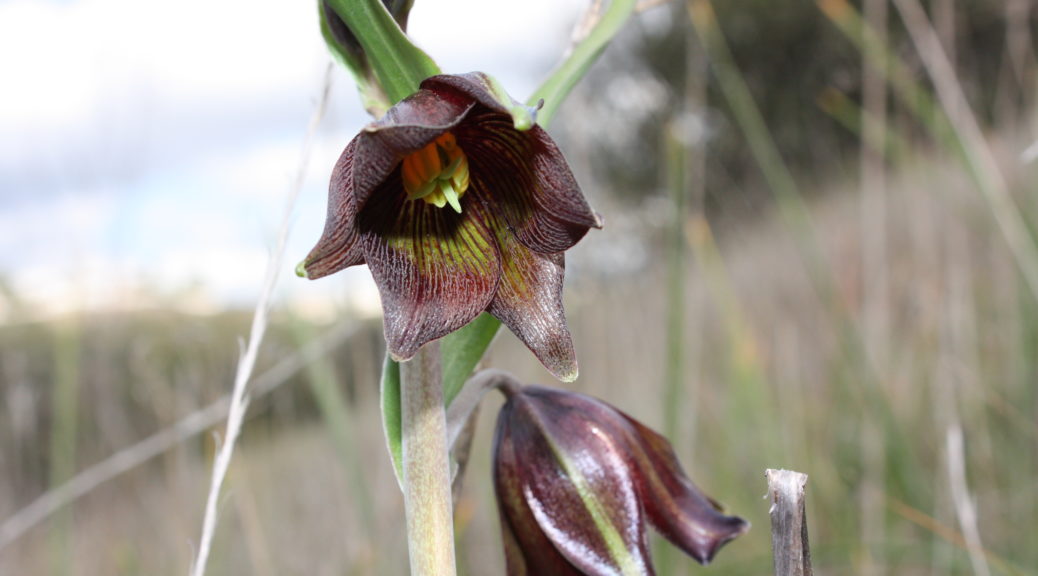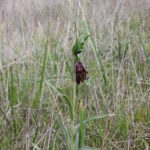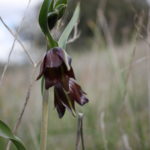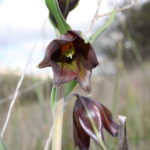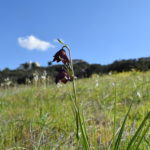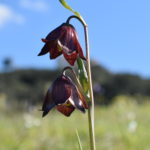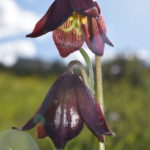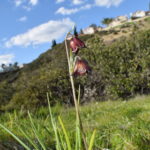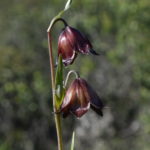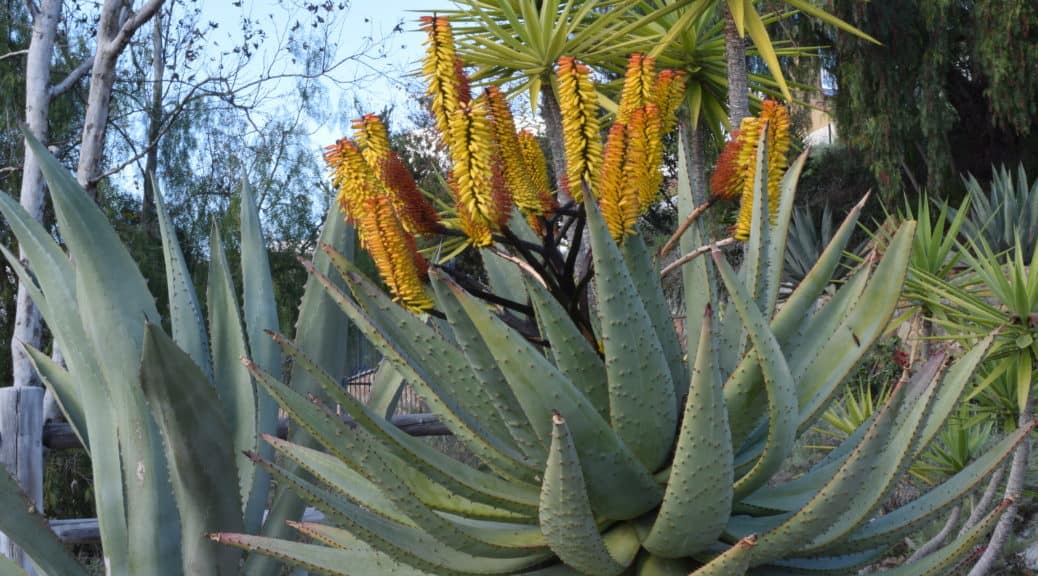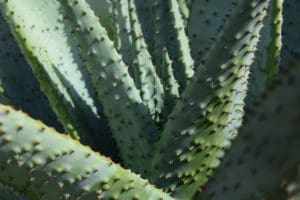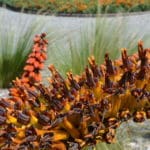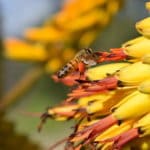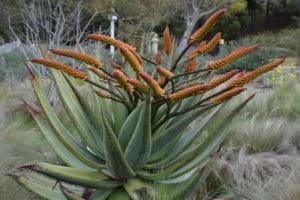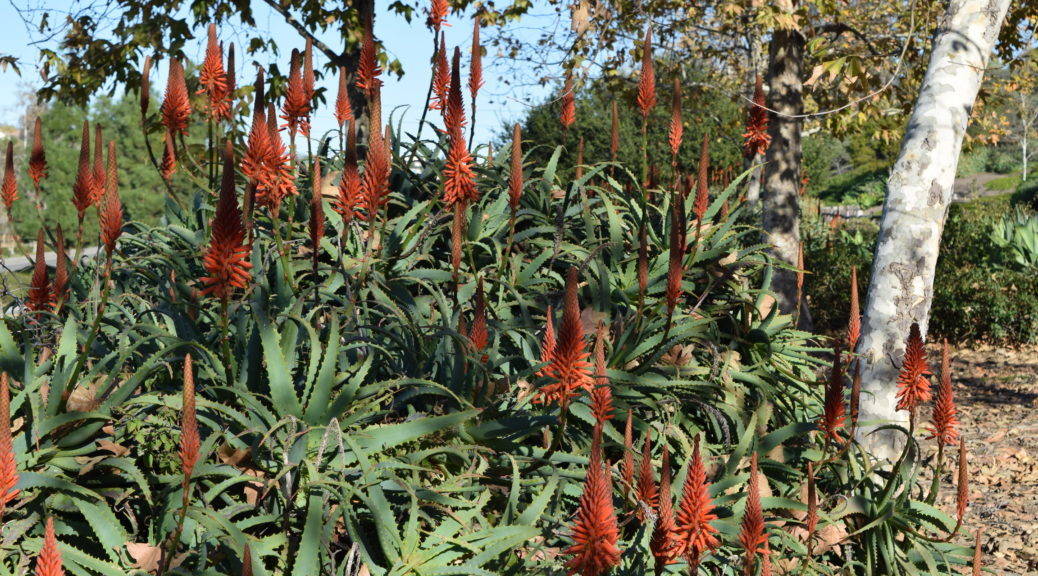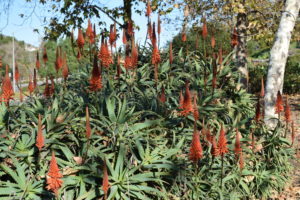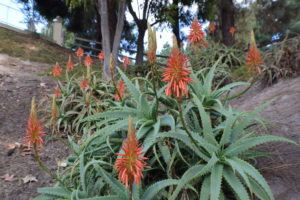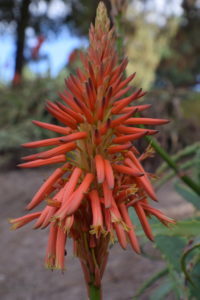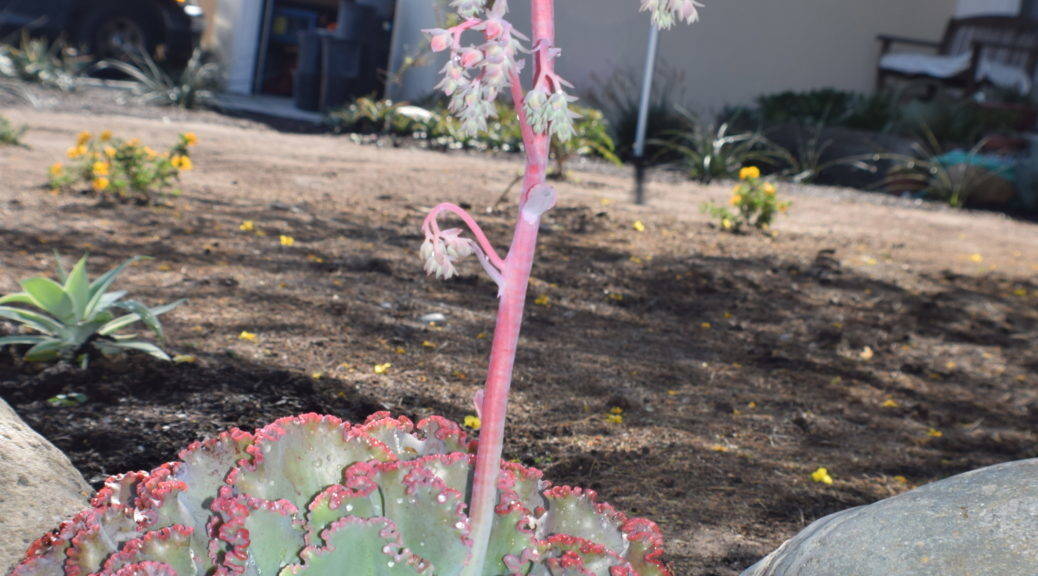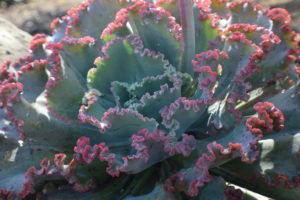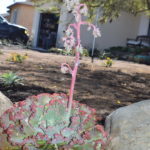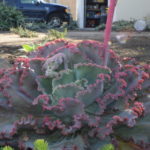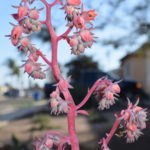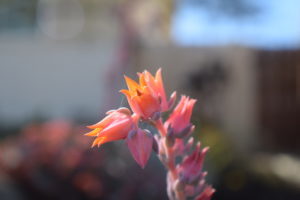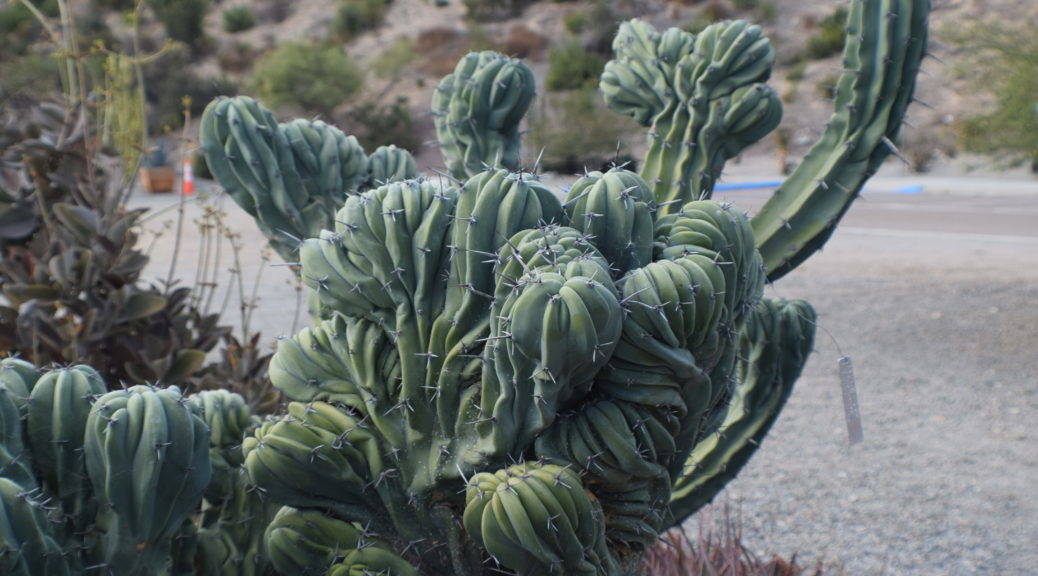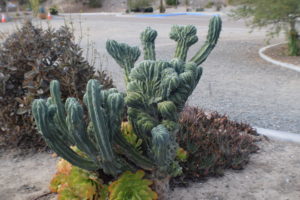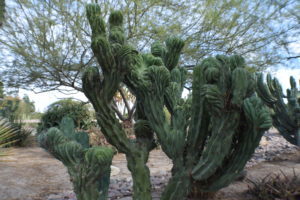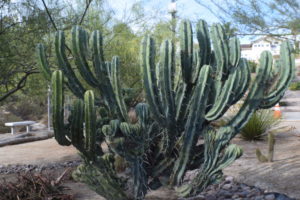On February 8, 2008 I stumbled upon a purple-brown, chocolate, lily-like flower during my walk through Rice Canyon Open Space Preserve; it turned out to be a rare flower that only blooms when we have a wet, rainy season in Chula Vista. The Fritillaria biflora ‘Chocolate Lily’ grows on the grassland foothills and is endemic to Rice Canyon. For the past 8 years during my walks in Rice Canyon, in the months of January – February, I’m always hopeful that I’d spot this beauty once again, but with the lack of rain I’ve had no such luck. Until this year, on February 23rd. During my many walks through Rice Canyon, I was trying to spot the Where’s Waldo of blooms on the grassy, rolling hillside of the canyon, with the recent and much needed rains, I found the elusive ‘Chocolate Lily.’
(hover mouse over each picture)
Fritillaria biflora ‘Chocolate Lily’ is a species in the Liliaceae family that is endemic to California and northern Baja. Fritillaria biflora is called ‘Chocolate Lily’ because its bell-shaped flowers resemble the color of chocolate.
(hover mouse over each picture)

